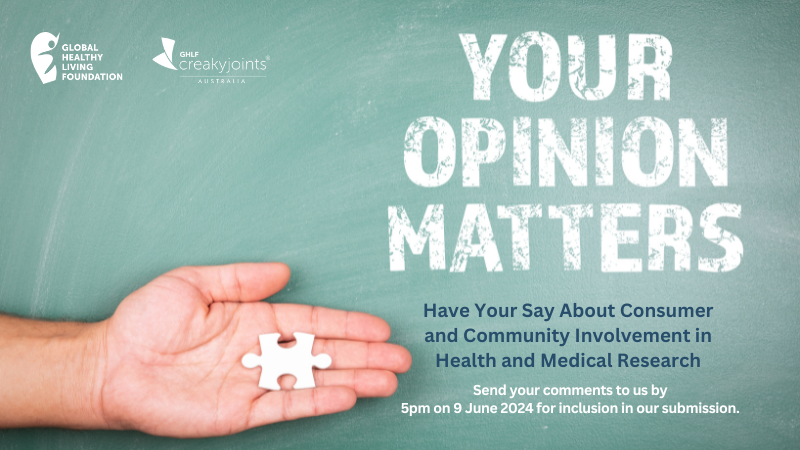What is Gout?
Gout is a type of arthritis. It usually causes severe, sudden attacks of inflammation in a joint. Gout symptoms include severe, sharp pain; redness; swelling; and/or tenderness in your joint. Your joint may be visibly swollen and even feel warm when you touch it. Gout episodes may come on very quickly. They often happen at night or when you wake up in the morning. You may go to bed feeling fine and wake up with severe gout symptoms.
Gout typically affects a single joint – about half the time, it strikes in your big toe. Gout can affect more than one joint at the same time in some people. A gout attack can come on very quickly, and last anywhere from a few days to up to 10 days or longer.
Gout may affect other joints in your lower extremities too, such as your foot, ankle or knee. It may affect joints higher on your body too, such as your elbow, hand or wrist, or even small joints in your fingers. Your spine is rarely affected by gout. Gout may also affect soft tissues, like your bursae (fluid-filled sacs that cushion joints like your shoulder, elbow or hip) or the sheaths around your tendons (fibrous, rope-like tissue that connects bones and helps your joints move).
Gout attacks often subside on their own after a week or two, but medications can help speed up healing. More importantly, medications that lower your uric acid (also called urate) levels, when used regularly over time, are very effective in preventing future gout flares.
What happens if you don’t treat gout?
Gout may affect the same joint over and over, or you may have symptoms that crop up in different joints over time. Without treatment, your gout flares could become more frequent, spread to other joints, and become more severe. These attacks could damage the affected joint over time. Also, you can develop tophi, or large swellings near the affected joint or in other locations. Tophi are made up of a substance called urate that hardens. Tophi look and feel like hard lumps under your skin. They release inflammatory chemicals that may damage your joint if you don’t get treatment.
If you have gout that isn’t controlled by treatment and persists for years, you could develop chronic gouty arthritis.
This can result in permanent joint damage, joint deformity and persistent pain. However, available treatments for gout can prevent this in most people. Don’t ignore your gout, but don’t worry that there is no hope for getting it under control. Getting control of your gout early is ideal, but treatments can help gout at any point.
Acute gout episodes can cause severe pain that keeps you from your normal activities during that time. You may be in so much pain that you have to stay home from work. Many people can’t put on their shoe during an episode of gout due to the severe pain and swelling in their joint. You may struggle to get up and down the stairs of your house, or to do your household chores like laundry or standing at the stove to cook your family a meal. You may not be able to do something as simple as accompany your kids to the school bus stop or walk your dog during an acute episode of gout. Depending on your situation, gout attacks could be a “big deal,” even if others around you don’t really understand what you’re going through.
If gout attacks become more frequent or severe, or if you develop chronic arthritis due to your gout, it can have a strongly negative impact on your life. Pain and disability could become a chronic problem that disrupts your work and home life. That’s why treatment and management are so important. Don’t dismiss gout as just “something you have to live with” for the rest of your life – your physician can help you control these attacks and effectively manage gout.
What Causes Gout?
Gout is caused when an excessive amount of urate builds up in your blood. Urate (also called uric acid) is a natural substance or chemical. Urate is produced by your own body as it metabolizes, or breaks down, a substance in the foods and drinks you consume called purines.
Purines are found in many foods and drinks, and they’re also made naturally by your body. Certain foods and drinks are very high in purines. These include red meats, organ meats like liver or kidneys, shellfish like mussels or scallops, thick soups and gravies, oily fish like mackerel or anchovies, and beer. Excessive consumption of purine-rich foods can increase your risk of getting gout, since the purines are broken down in your body to make urate.
Genetics are a key part of how we get gout. About 10% of people with gout make too much urate due to genetic factors. About 90% of people with gout reabsorb too much urate in their kidneys because of genetic factors. People with decreased kidney function for any reason (such as hypertension or diabetes) can increase their urate since the kidney has more trouble filtering the urate from the blood.
People who either make too much or excrete too little urate are especially sensitive to foods, drinks or medications that increase urate levels. This is what happens when you drink alcoholic beverages: they stimulate the kidney to pull more urate back into your bloodstream. The same thing happens when you take medications such as some diuretics, like hydrochlorothiazide (Hydrodiuril®) or furosemide (Lasix®). Beer increases urate level in two ways. It contains proteins that are broken down to form purines that then break down to form urate in your body. As with all alcoholic drinks, it also makes your kidney reabsorb more urate. That’s why beer is often talked about as a potent stimulus for gout flares.
High-fructose corn syrup, which is found in many sweetened soft drinks and other beverages, can raise urate levels too. People with gout are often surprised when their friends who eat or drink the same things they do don’t get gout. Why does this happen? The reason is that people who develop gout have a genetic tendency to high urate (for either of the reasons discussed above) and are much more sensitive to the further increase that comes from particular foods or drinks.
Once you have high urate in your blood, the urate crystals can deposit in your joints (and other locations). When the urate crystals in your joints are recognized by your immune system, they are identified as “foreign bodies” and are attacked the way bacteria would be. This involves all the signs of inflammation: redness, heat and swelling, with white blood cells rapidly entering the joint. Urate crystals also can build up and form hard deposits called tophi (or the singular, tophus). That’s why gout is considered a “crystal” arthritis or crystal disease. Urate crystals can also form kidney stones, which can be extremely painful to “pass” through your urine.
What is Hyperuricemia?
High urate in your blood is also called hyperuricemia. One of the goals of your gout treatment plan, including medications and diet/lifestyle changes, will be to keep your uric acid level below 6.0 milliliters per deciliter, or mg/dL. People with gout with tophi will have a lower urate goal, which is below 5 mg/dL. Your doctor can test your uric acid levels at regular appointments so you know your current number. You should always ask about your urate level and know that your goal is below 6.0.
When you have a gout flare, and the body sees the urate crystals as “foreign,” you are seeing the results of your body’s attempts to destroy the crystals. White blood cells attack and ingest the crystals, and inflammatory chemicals are released that bring in even more white blood cells. The result is inflammation. Your big toe (gout’s favorite spot) may swell up suddenly, turning red and hot, so you think it may be infected or even fractured. It’s not an infection or a fracture, however – it’s inflammation.
Whether a person with gout makes too much urate or their kidneys excrete too little, the end result is high blood urate, and lowering it is the key treatment goal. Adjusting your diet and keeping well hydrated are important, but for most people with gout, one or multiple medications will be needed to get the urate to goal.
Common Misconceptions About Gout
Watch our webinar with Dr. Ted Fields, MD, Attending Physician, Hospital for Special Surgery and Professor of Clinical Medicine, Weill Cornell Medical College. This webinar covered a range of issues around gout, including the many facts and misconceptions about the role of diet in gout, medications for gout, and how to work with your doctor for long-term gout control.
Who Gets Gout?
Gout is a very common disease in the developed world. A major study conducted 10 years ago found that as many as 8.3 million U.S adults have been diagnosed with gout, or 3.9 percent of the adult population. That includes 6.1 million men and 2.2 million women. It’s extremely rare in children.
The number of adults with gout is rising. This may be due to some lifestyle-related risk factors for gout, like obesity, high sugar consumption and heavy alcohol drinking. As obesity rates have spiked in the U.S., so have gout rates. In a study of U.S. adults tracking gout rates from 1988-1994, only 2.7 percent had been diagnosed with the disease.
Gout was once called the “rich man’s disease” or the “disease of kings.” This is probably because famous men like King Henry VIII of England and American Founding Father Benjamin Franklin had gout. People often assumed that only wealthy men who could afford to eat diets full of “rich” delicacies and drinks developed gout. Today, people of all socioeconomic levels have gout, so don’t buy into the myth that gout is only a problem that affects rich people. Gout has more to do with how your body metabolizes uric acid than your bank account.
High levels of uric acid in your blood, can cause the monosodium urate crystals to form, leading to gout, but not every person with a high uric acid test result does get the disease. What factors make a person more likely to get gout?
One risk factor for gout is being male. Men get gout at much higher rates than women – men are anywhere from five to 10 times more likely to get gout, especially in younger age groups. Before they reach menopause, women are far less likely to get gout because female sex hormones have a protective effect on uric acid levels. But after menopause, women’s risk of gout increases.
Other risk factors for gout include:
- Obesity, or having a body-mass index over 30 kg/m2
- Heavy, habitual drinking
- Some medications, including diuretics, which treat high blood pressure, and cyclosporine
- High consumption of foods rich in purines
- High purine foods include: red meats, organ meats and certain types of seafood (anchovies, herring, u sardines, mussels, scallops, trout, haddock, mackerel and tuna).
- High consumption of sugar-rich drinks (like sweet tea or soda pop) or foods
- Certain chronic health conditions, like high blood pressure, diabetes mellitus, insulin resistance, congestive heart failure, metabolic syndrome and kidney disease
- Family history of gout, such as if your dad, granddad or brother had gout
Certain racial and ethnic groups may have higher prevalence of gout, and this is likely to be driven by genetic factors. There are particular genes associated with greater susceptibility to develop gout. African-Americans have higher gout rates than white Americans. Higher gout prevalence is also associated with the Maori ethnic group from New Zealand and the Hmong ethnic group from China.
Because several gout risk factors are related to your lifestyle and diet, you can take steps to change them. If you already have gout, medications can help prevent further attacks and lower your uric acid levels. But changing some dietary and lifestyle habits add further protection. Cutting back on your alcohol consumption, getting more exercise, and losing weight with a healthy diet emphasizing fresh fruits and vegetables over red meats and processed foods are excellent habits for your overall health. These steps may help you prevent future gout attacks too, because they can help lower uric acid levels. Uric acid levels in your blood are not static. You can fight back against gout.
Diet (including how much alcohol you drink) and exercise are risk factors you can control – but you may need a little help to make those changes stick. Your doctor is your partner in managing your gout and preventing long- term problems, but other members of your healthcare team, such as nurses, physical therapists, nutritionists and others, can play a major role as well.
How is Gout Diagnosed?
The symptoms of an initial, acute gout episode—sudden, severe pain and swelling in a joint like your toe–are telltale. If you experience these symptoms, or tell your spouse or friends what’s happening, they may respond, “It’s gout. You can be sure it’s gout.”
But how can you be sure it’s gout? If you notice these signs, see your doctor right away to get an accurate diagnosis and start treatment. Your primary-care physician can diagnose gout in most cases. You may also be referred to a rheumatologist, a specialist in the diagnosis, treatment and long-term management of arthritis and related rheumatic diseases, which includes gout.
There is no single, simple test to confirm diagnosis of gout. First, your doctor will give you a physical examination to assess your overall health, and to get the history of your joint pain and other symptoms that suggest gout. He or she may check for pain or swelling in other joints too. If you have signs of possible gout in several joints, that’s called polyarticular disease. However, early on, many people have gout symptoms in just one or possibly two joints.
You may be asked more about your family history, your diet and drinking habits, and other medical conditions you may have. Be as open and clear as possible. Questions about how much or how often you drink alcohol, or how much or what you eat are not meant as a way to judge your lifestyle, but to gain a complete picture of potential gout risk factors. Also, don’t downplay how much pain you are feeling. Some people don’t like to admit they are in pain or that they can’t work through it. Be honest about the intensity and impact of your pain, so your doctor can take this into account when prescribing your treatments.
Your doctor will give you a blood test can measure your uric acid levels to see if they are elevated. It’s important to know that any urate level above 6 is too high for a person with gout, even if their result is within the lab’s “normal range” for urate. However, many people with elevated uric acid do not get gout or experience gout flares. Essentially all gout patients will have a urate level above 6.0 mg/dL, but many people with high urate levels don’t get gout. Be aware that your urate level can go down during a gout flare, so if the level is above 6.0 during an attack it will generally be repeated two weeks after the flare is over to see your true urate “baseline” level.
To diagnose gout, your doctor may look for monosodium urate crystals in the synovial fluid of your swollen joint. Your doctor will insert a needle to draw out some fluid, and examine it under a polarized microscope to look for needle-like crystals that suggest gout. If you don’t have visible monosodium urate crystals in your joint after one flare, that doesn’t necessarily mean you don’t have gout. At times joint fluid may need to be re-evaluated during a future flare to finally see the crystals. Seeing urate crystals gives an absolute diagnosis of gout. However, it is quite possible to diagnose gout without removing joint fluid in people with “classical” gout symptoms, physical exam and elevated urate levels. Removing and analyzing joint fluid for urate crystals is especially important when the doctor needs to separate gout from other conditions, such as infections or other types of crystal-related arthritis.
Your doctor may also take some images of your affected joint. These include ultrasound or dual energy computed tomography scans (CT), which help show signs of early gout. If you’ve had gout for a while, X-rays can show more long-term joint damage. Imaging tests are helpful for confirming the diagnosis along with the joint fluid test, blood test and physical exam.
It’s very important that you do not try to self-diagnose yourself with gout based simply on how your joint looks and feels, and then try to treat it on your own with supplements, herbal treatments or fad diets. See your doctor to get an accurate diagnosis and start treatment.





